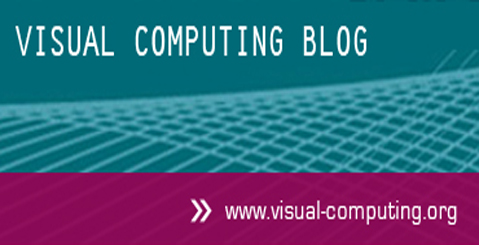B04 | Adaptive Algorithms for Motion Estimation
This project aims at developing novel algorithms for optical flow (2D motion) and scene flow (3D motion) estimation. Instead of relying on fixed assumptions, the goal is to adaptively integrate prior knowledge and other available information in order to design approaches that are not only highly accurate but also generalize well across datasets.
Fig. 1: Optical flow estimation on the automotive KITTI dataset using the method of Maurer et al. (BMVC 2018).
Research Questions
How can we develop algorithms for adaptive motion estimation of high accuracy and generalizability that are applicable in the wild?
To which extent can concepts be generalized from the 2D to the 3D domain and how can additional constraints imposed by the 3D world improve the estimation?
How can we transfer the benefits of adaptive algorithms to specific applications?
Publications
- J. Schmalfuß, L. Mehl, and A. Bruhn, “Distracting Downpour: Adversarial Weather Attacks for Motion Estimation,” in Proceedings of the IEEE/CVF International Conference on Computer Vision (ICCV), Oct. 2023, pp. 10106–10116. [Online]. Available: https://openaccess.thecvf.com/content/ICCV2023/html/Schmalfuss_Distracting_Downpour_Adversarial_Weather_Attacks_for_Motion_Estimation_ICCV_2023_paper.html
- J. Schmalfuß, E. Scheurer, H. Zhao, N. Karantzas, A. Bruhn, and D. Labate, “Blind image inpainting with sparse directional filter dictionaries for lightweight CNNs,” Journal of Mathematical Imaging and Vision (JMIV), vol. 65, pp. 323–339, 2023, doi: 10.1007/s10851-022-01119-6.
- L. Mehl, J. Schmalfuß, A. Jahedi, Y. Nalivayko, and A. Bruhn, “Spring: A High-Resolution High-Detail Dataset and Benchmark for Scene Flow, Optical Flow and Stereo,” in Proceedings of the IEEE/CVF Conference on Computer Vision and Pattern Recognition (CVPR), Jun. 2023, pp. 4981–4991. [Online]. Available: https://openaccess.thecvf.com/content/CVPR2023/html/Mehl_Spring_A_High-Resolution_High-Detail_Dataset_and_Benchmark_for_Scene_Flow_CVPR_2023_paper.html
- A. Jahedi, M. Luz, M. Rivinius, L. Mehl, and A. Bruhn, “MS-RAFT+: High Resolution Multi-Scale RAFT,” International Journal of Computer Vision, pp. 1573–1405, 2023, doi: 10.1007/s11263-023-01930-7.
- L. Mehl, A. Jahedi, J. Schmalfuß, and A. Bruhn, “M-FUSE: Multi-frame Fusion for Scene Flow Estimation,” in Proc. Winter Conference on Applications of Computer Vision (WACV), Jan. 2023. doi: 10.48550/arXiv.2207.05704.
- M. Philipp, N. Bacher, S. Sauer, F. Mathis-Ullrich, and A. Bruhn, “From Chairs To Brains: Customizing Optical Flow For Surgical Activity Localization,” in Proceedings of the IEEE International Symposium on Biomedical Imaging (ISBI), IEEE, Mar. 2022, pp. 1–5. [Online]. Available: https://ieeexplore.ieee.org/document/9761704
- T. Krake, A. Bruhn, B. Eberhardt, and D. Weiskopf, “Efficient and Robust Background Modeling with Dynamic Mode Decomposition,” Journal of Mathematical Imaging and Vision (2022), 2022, doi: 10.1007/s10851-022-01068-0.
- J. Schmalfuß, L. Mehl, and A. Bruhn, “Attacking Motion Estimation with Adversarial Snow,” in Proc. ECCV Workshop on Adversarial Robustness in the Real World (AROW), 2022. [Online]. Available: /brokenurl#ttps://arxiv.org/abs/2210.11242
- A. Jahedi, L. Mehl, M. Rivinius, and A. Bruhn, “Multi-Scale RAFT: combining hierarchical concepts for learning-based optical flow estimation,” in Proceedings of the IEEE International Conference on Image Processing (ICIP), Oct. 2022, pp. 1236–1240. doi: 10.48550/arXiv.2207.12163.
- J. Schmalfuß, P. Scholze, and A. Bruhn, “A Perturbation-Constrained Adversarial Attack for Evaluating the Robustness of Optical Flow,” Proceedings of the European Conference on Computer Vision (ECCV), Oct. 2022, doi: 10.1007/978-3-031-20047-2_11.
- L. Mehl, C. Beschle, A. Barth, and A. Bruhn, “An Anisotropic Selection Scheme for Variational Optical Flow Methods with Order-Adaptive Regularisation,” in Proceedings of the International Conference on Scale Space and Variational Methods in Computer Vision (SSVM), Springer, 2021, pp. 140–152. [Online]. Available: https://link.springer.com/chapter/10.1007%2F978-3-030-75549-2_12
- K. Kurzhals et al., “Visual Analytics and Annotation of Pervasive Eye Tracking Video,” in Proceedings of the Symposium on Eye Tracking Research & Applications (ETRA), ACM, 2020, pp. 16:1–16:9. doi: 10.1145/3379155.3391326.
- H. Men, V. Hosu, H. Lin, A. Bruhn, and D. Saupe, “Visual Quality Assessment for Interpolated Slow-Motion Videos Based on a Novel Database,” in Proceedings of the International Conference on Quality of Multimedia Experience (QoMEX), 2020, pp. 1–6. [Online]. Available: https://ieeexplore.ieee.org/document/9123096/authors#authors
- H. Men, V. Hosu, H. Lin, A. Bruhn, and D. Saupe, “Subjective annotation for a frame interpolation benchmark using artefact amplification,” Quality and User Experience, vol. 5, Art. no. 1, 2020, [Online]. Available: https://link.springer.com/article/10.1007%2Fs41233-020-00037-y
- H. Men, H. Lin, V. Hosu, D. Maurer, A. Bruhn, and D. Saupe, “Visual Quality Assessment for Motion Compensated Frame Interpolation,” in Proceedings of the International Conference on Quality of Multimedia Experience (QoMEX), IEEE, 2019, pp. 1–6. [Online]. Available: https://ieeexplore.ieee.org/document/8743221
- D. Maurer, M. Stoll, and A. Bruhn, “Directional Priors for Multi-Frame Optical Flow,” in Proceedings of the British Machine Vision Conference (BMVC), BMVA Press, 2018, pp. 106:1–106:13. [Online]. Available: http://bmvc2018.org/contents/papers/0377.pdf
- D. Maurer, N. Marniok, B. Goldluecke, and A. Bruhn, “Structure-from-motion-aware PatchMatch for Adaptive Optical Flow Estimation,” in Computer Vision – ECCV 2018. ECCV 2018. Lecture Notes in Computer Science, vol. 11212, V. Ferrari, M. Hebert, C. Sminchisescu, and Y. Weiss, Eds., Springer International Publishing, 2018, pp. 575–592. doi: 10.1007/978-3-030-01237-3_35.
- D. Maurer, Y. C. Ju, M. Breuß, and A. Bruhn, “Combining Shape from Shading and Stereo: A Joint Variational Method for Estimating Depth, Illumination and Albedo,” International Journal of Computer Vision, vol. 126, Art. no. 12, 2018, doi: 10.1007/s11263-018-1079-1.
- D. Maurer and A. Bruhn, “ProFlow: Learning to Predict Optical Flow,” in Proceedings of the British Machine Vision Conference (BMVC), BMVA Press, 2018. [Online]. Available: http://bmvc2018.org/contents/supplementary/pdf/0277_supp.pdf
- K. Kurzhals, M. Stoll, A. Bruhn, and D. Weiskopf, “FlowBrush: Optical Flow Art,” in Symposium on Computational Aesthetics, Sketch-Based Interfaces and Modeling, and Non-Photorealistic Animation and Rendering (EXPRESSIVE, co-located with SIGGRAPH)., 2017, pp. 1:1–1:9. doi: 10.1145/3092912.3092914.
- D. Maurer, A. Bruhn, and M. Stoll, “Order-adaptive and Illumination-aware Variational Optical Flow Refinement,” in Proceedings of the British Machine Vision Conference (BMVC), BMVA Press, 2017, pp. 150:1–150:13. doi: 10.5244/C.31.150.
- M. Stoll, D. Maurer, and A. Bruhn, “Variational Large Displacement Optical Flow Without Feature Matches.,” in Energy Minimization Methods in Computer Vision and Pattern Recognition. EMMCVPR 2017. Lecture Notes in Computer Science, M. Pelillo and E. R. Hancock, Eds., Springer International Publishing, 2017, pp. 79–92. doi: 10.1007/978-3-319-78199-0_6.
- D. Maurer, M. Stoll, S. Volz, P. Gairing, and A. Bruhn, “A Comparison of Isotropic and Anisotropic Second Order Regularisers for Optical Flow,” in Scale Space and Variational Methods in Computer Vision. SSVM 2017. Lecture Notes in Computer Science, vol. 10302, F. Lauze, Y. Dong, and A. B. Dahl, Eds., Springer International Publishing, 2017, pp. 537–549. doi: 10.1007/978-3-319-58771-4_43.
- D. Maurer, M. Stoll, and A. Bruhn, “Order-adaptive Regularisation for Variational Optical Flow: Global, Local and in Between.,” in Scale Space and Variational Methods in Computer Vision. SSVM 2017. Lecture Notes in Computer Science, F. Lauze, Y. Dong, and A. B. Dahl, Eds., Springer International Publishing, 2017, pp. 550–562. doi: 10.1007/978-3-319-58771-4_44.
- M. Stoll, D. Maurer, S. Volz, and A. Bruhn, “Illumination-aware Large Displacement Optical Flow,” in Proceedings of International Conference on Energy Minimization Methods in Computer Vision and Pattern Recognition (EMMCVPR). Lecture Notes in Computer Science, M. Pelillo and E. R. Hancock, Eds., Springer International Publishing, 2017, pp. 139–154. doi: 10.1007/978-3-319-78199-0_10.
FOR SCIENTISTS
Projects
People
Publications
Graduate School
Equal Opportunity
FOR PUPILS
PRESS AND MEDIA
© SFB-TRR 161 | Quantitative Methods for Visual Computing | 2019.










